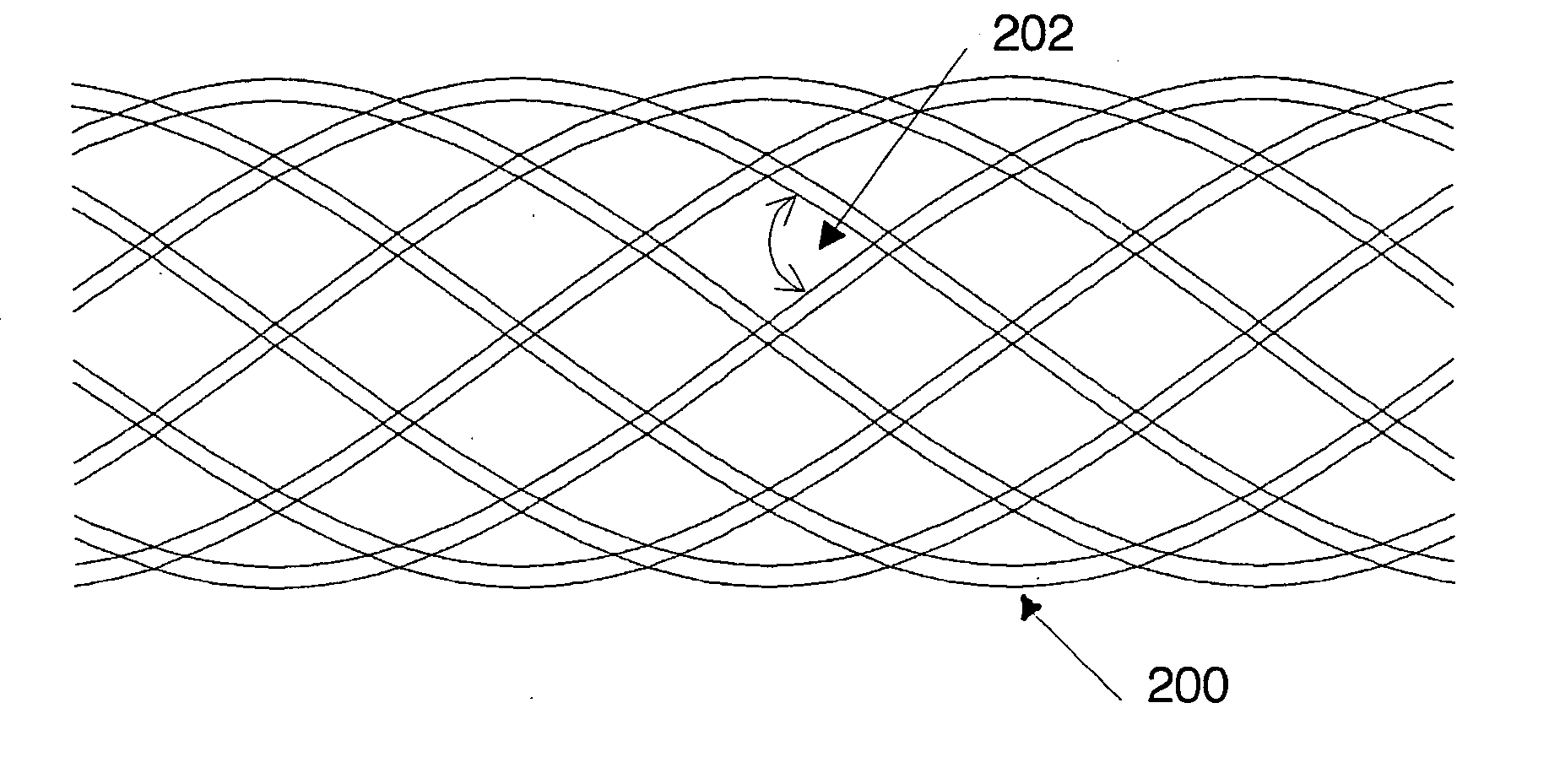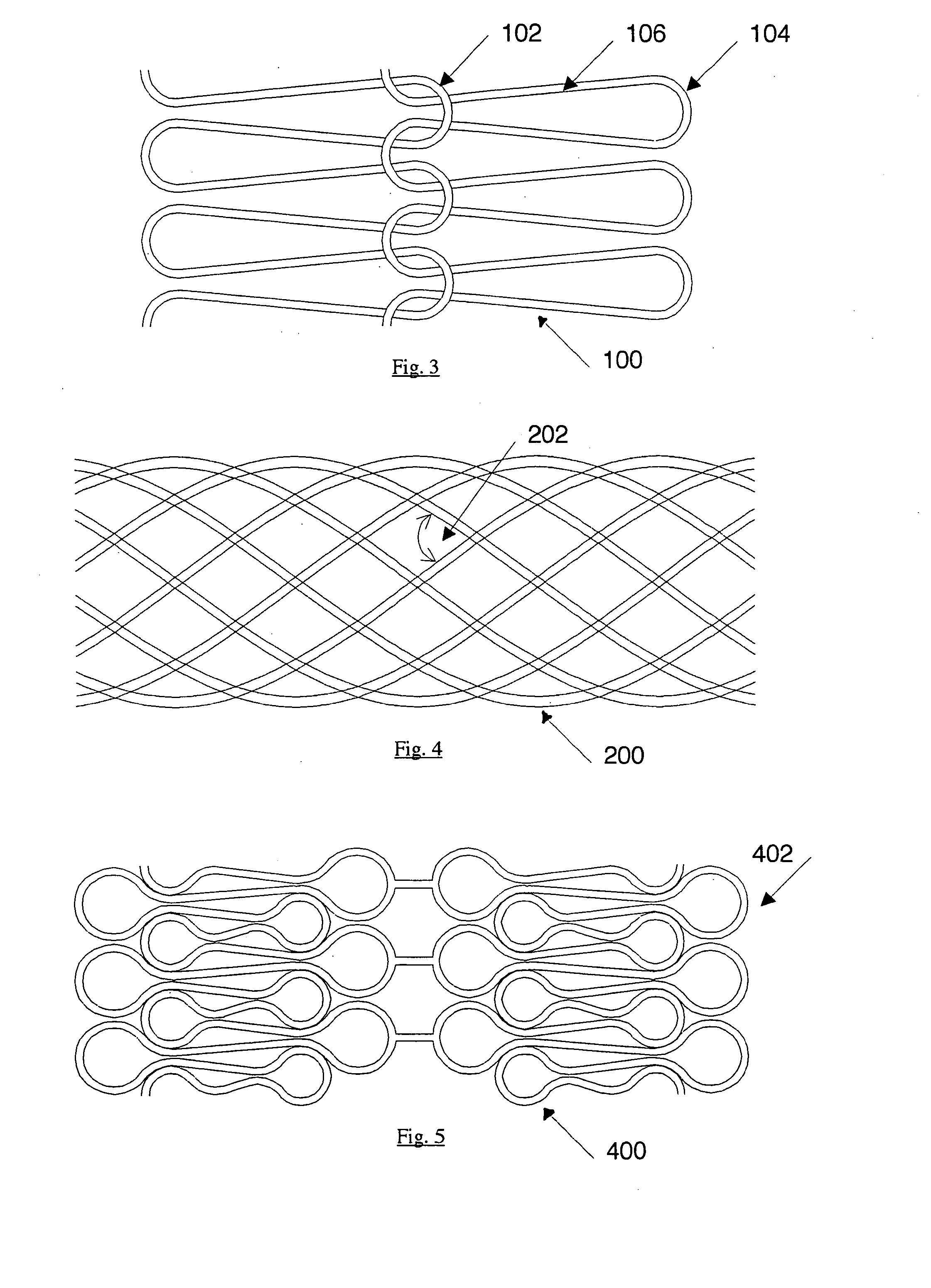Implant of low radial strength
a technology of radial strength and implant, which is applied in the field of endovascular implants, can solve problems such as cutting the ground away, and achieve the effect of better adapting to the pathological circumstances
- Summary
- Abstract
- Description
- Claims
- Application Information
AI Technical Summary
Benefits of technology
Problems solved by technology
Method used
Image
Examples
embodiment 1
[0036] Sterilized stents comprising the in vivo degradable magnesium alloy WE43 were investigated. The stents were serially numbered for the investigations (Nos 1-14). The stents were of a diameter of 3.0 mm and stents Nos. 1, 3 and 5 were of a length of 15 mm while stents Nos. 2, 4 and 6 through 14 were of a length of 10 mm.
[0037] The radial strength of the degradable stents was investigated after storage in a corrosive environment. For that purpose, after a defined storage time, the compression pressure was measured as a measurement in respect of radial strength.
[0038] Before being put into storage in the test medium, the test objects which are in the form of bare stents were implanted into sterilized polyurethane hoses (inside diameter 3 mm, wall gauge 0.075 mm, sterilization with formaldehyde vapor (FAD) with an inwardly disposed distal sleeve (Teflon). Implantation was effected manually under sterile laminar flow conditions.
[0039] Firstly the stent was removed from the speci...
embodiment 2
[0053]FIG. 3 shows a portion from a development of a stent illustrating a balloon-expandable structure 100 on a wire basis, which is composed of a multiplicity of individual ring segments. No transverse forces are transmitted by the flexible connection 102 of the individual ring segments, even in the case of curved vessels. The bending radius 104 is adapted to the material properties and the desired maximum opening diameter. The length of the element 106, together with the wire diameter, determines the radial strength. In particular the biodegradable magnesium alloy WE43 is suitable as the material.
embodiment 3
[0054]FIG. 4 shows a self-expandable structure 200 on a wire basis.
[0055] Described hereinafter are various measures in terms of the stent design, by means of which the radial strength can be set to the range of values according to the invention. The measures are based on established theoretical considerations and are familiar to the individual skilled in the art per se so that the practical implementation thereof can be effected at a low level of experimental complication and expenditure. The measures are to be respectively matched to each other, so as to give a radial strength in the desired value range.
[0056] A first measure provides that a biodegradable material with a low modulus of elasticity is used. By way of example, the magnesium alloy WE43 with a modulus of elasticity of approximately 45,000 MPa presents itself as being suitable. If the illustrated structure is wound from twenty wires of a wire diameter of 0.09 mm, at an angle 202 of 110°, to form a stent of diameter of...
PUM
 Login to View More
Login to View More Abstract
Description
Claims
Application Information
 Login to View More
Login to View More - R&D
- Intellectual Property
- Life Sciences
- Materials
- Tech Scout
- Unparalleled Data Quality
- Higher Quality Content
- 60% Fewer Hallucinations
Browse by: Latest US Patents, China's latest patents, Technical Efficacy Thesaurus, Application Domain, Technology Topic, Popular Technical Reports.
© 2025 PatSnap. All rights reserved.Legal|Privacy policy|Modern Slavery Act Transparency Statement|Sitemap|About US| Contact US: help@patsnap.com



